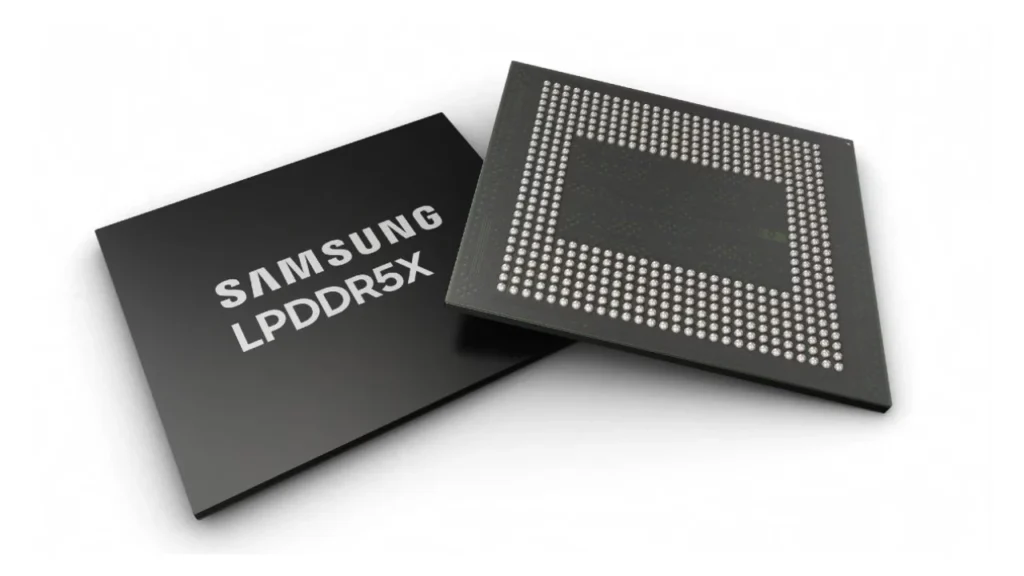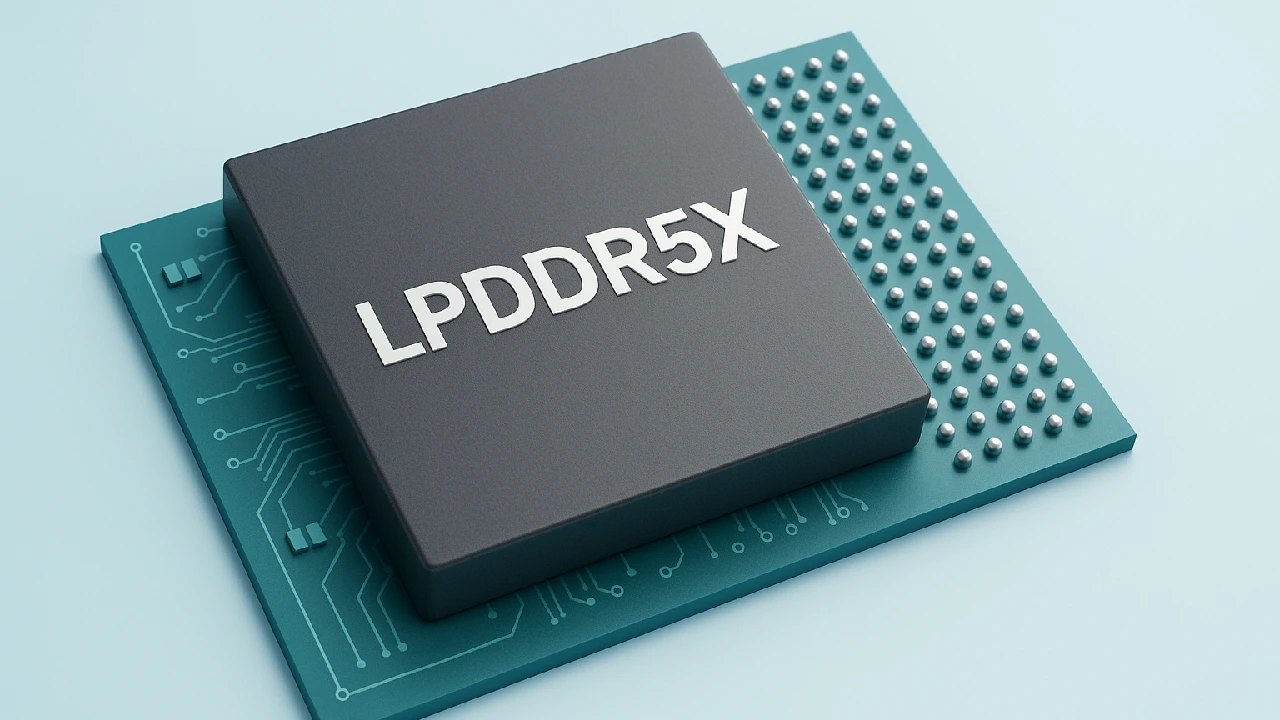LPDDR5X memory offers up to 10.7 Gbit/s performance and 20% power savings, making it ideal for smartphones, AI gadgets, and next-generation computers.

LPDDR5X memory is the most recent advancement in mobile and AI hardware, combining ultra-high speed with low power efficiency. JEDEC designed it in 2021, and it currently powers everything from smartphones and ultrathin laptops to AI accelerators and automotive systems. With rates exceeding 9.6 Gbit/s, LPDDR5X enables seamless multitasking, gaming, and future-proof performance while conserving battery life.
What is LPDDR5X Memory
LPDDR5X, which stands for Low Power Double Data Rate 5X, is an upgraded version of LPDDR5 introduced by JEDEC in July 2021. It was designed to handle the growing need for mobile and AI applications that require lightning-fast responsiveness while maintaining energy economy. Unlike regular DDR5 desktop RAM, LPDDR5X is soldered directly to the motherboard, allowing for more compact designs in smartphones, tablets, and ultrathin laptops.
This memory standard improves upon LPDDR5, providing increased bandwidth, lower latency, and up to 25% greater power efficiency. The end result is seamless performance in gaming, 4K/8K video playback, AI-assisted apps, and connected devices such as automobiles and routers.
Key Features and Speed Enhancements
One of LPDDR5X’s most notable features is its significant speed increase. Starting at 6400 MT/s and scaling up to 8533 MT/s, it can now achieve 9.6 Gbit/s with SK Hynix’s LPDDR5T and an industry-leading 10.7 Gbit/s with Samsung’s 12nm technology.
- Bandwidth: Multi-channel setups can exceed 68 GB/s, critical for handling high-bandwidth tasks like 5G networking or UHD processing.
- Low Latency: Optimized for frequent random access, ensuring responsive app switching and fast in-game performance.
- Responsiveness: Smooth playback for 4K/8K content and graphically demanding apps.
For comparison, LPDDR4X maxed at 4267 MT/s and LPDDR5 maximum at 6400 MT/s; LPDDR5X significantly outperforms both.
Power Efficiency and Heat Management
Performance is only half of the story; LPDDR5X is designed for efficiency. It requires substantially less energy than DDR5’s 1.1V, running at only 0.5-0.6V. In practical terms:
- Battery Gains: Extends smartphone and laptop battery life by reducing power draw.
- Heat Control: Lower voltage means reduced heat buildup, keeping devices cooler.
- Efficiency Gains: Up to 25% better than LPDDR5, and 61% less power compared to DDR5 in demanding AI workloads.
- Self-Refresh Mode: Up to 86% power savings when idle, thanks to advanced dynamic voltage frequency scaling (FDVFS).
This efficiency makes it perfect not only for phones, but also for edge AI devices and automotive systems where power is a concern.
Physical Design and Packaging
LPDDR5X is available in two formats: PoP (Package on Package) and BGA (Ball Grid Array), which are soldered directly to motherboards. While this ensures compactness, RAM cannot be replaced by the user.
However, Micron’s new LPCAMM2 modular design alters the game. LPCAMM2 combines the efficiency of LPDDR5X with the flexibility of modular RAM, saving 60% more space than SODIMMs and allowing for future upgrades. This has the potential to change ultrathin notebooks, which have hitherto had limited serviceability.
Signal Integrity and Reliability
To support higher speeds, LPDDR5X integrates advanced signal correction:
- TX/RX Equalization: Improves signal stability during high-speed transfers.
- Adaptive Refresh Management: Boosts reliability under variable workloads.
- On-Die ECC (Error Correction Code): Ensures data accuracy, a must for AI and automotive systems.
These upgrades make LPDDR5X stable enough for mission-critical applications, from self-driving cars to AI accelerators.
Applications and Use Cases
LPDDR5X is now found across a diverse range of industries:
- Mobile Devices: Flagship smartphones, tablets, ultrabooks.
- AI Systems: Edge AI accelerators and on-device models needing low latency.
- Automotive: ADAS and infotainment, thanks to AEC-Q100 certification.
- Networking: Powering 5G equipment that demands fast, reliable throughput.
- Digital Home: UHD TVs, routers, and multimedia devices.
- PCs & Servers: Extending into laptops and lightweight servers for better balance of speed and efficiency.
Samsung, Micron, and SK Hynix are leading this race, with Samsung’s 10.7 Gbit/s modules and Micron’s Snapdragon-validated LPDDR5X demonstrating how quickly usage is accelerating.
Final Take
LPDDR5X is more than just quicker RAM; it is a bridge to the future of on-device AI, 5G, and ultra-efficient computing. It positions itself as the memory backbone for next-generation smartphones, laptops, and beyond by offering unrivaled speed, lower power consumption, and revolutionary packaging such as LPCAMM2.







